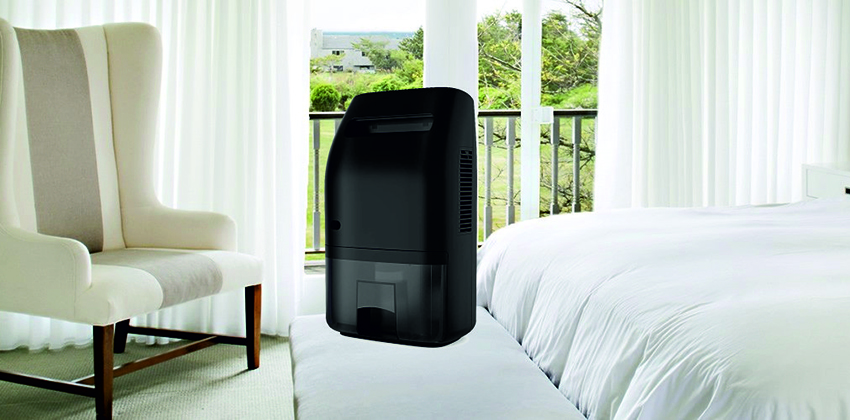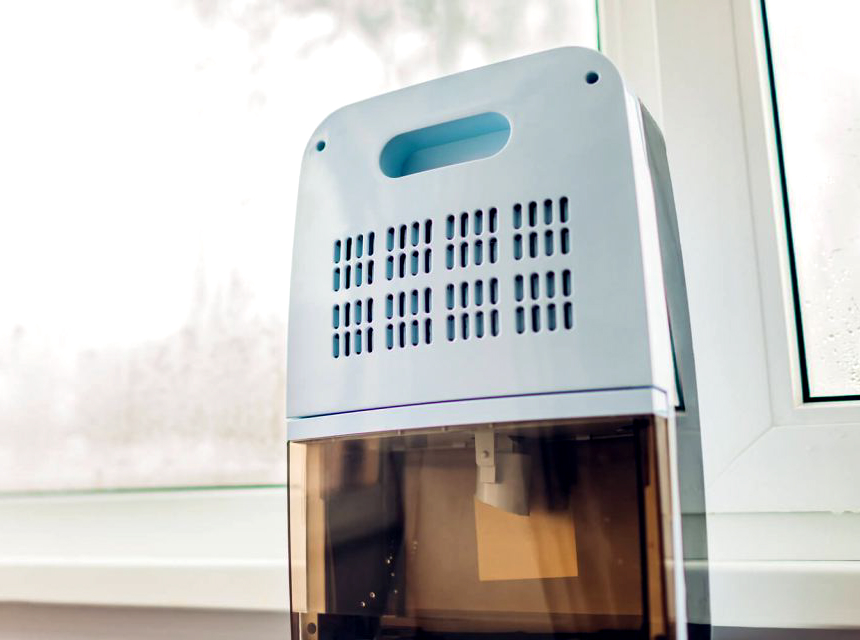

While living in a place with low humidity levels can be hugely detrimental to your health, a place with extremely high humidity levels can be equally harmful. If you are experiencing extremely high humidity levels at your home or office, it’s bad for your health, and you need to do something about it as soon as possible. One of the most effective ways of controlling an extremely humidified environment is by dehumidifying it.
But while a dehumidifier can be expensive, we believe dehumidifier running costs are often too exaggerated. If you are considering buying one of these machines for your home, you may be curious to know its potential running costs. Well, we have brought answers. We may not give you specific answers about your device’s running costs, but we will give you an idea. The running costs are often determined by a couple of factors, all of which we will discuss in this guide.
Different makers often build and design a wide range of electric dehumidifiers, with each model coming with a certain pre-determined energy rating. The energy rating, according to Wikipedia Trusted Source Energy Star - Wikipedia Energy Star (trademarked ENERGY STAR) is a program run by the U.S. Environmental Protection Agency (EPA) and U.S. Department of Energy (DOE) that promotes energy efficiency. The program provides information on the energy consumption of products and devices using different standardized methods. The Energy Star label is found on more than 75 different certified product categories, homes, commercial buildings, and industrial plants. In the United States, the Energy Star label is also shown on the Energy Guide appliance label of qualifying products. en.wikipedia.org , means the amount of power the unit is designed to consume, and it usually comes in watts or kilowatts, depending on the manufacturer. They often print the information about the energy rating on the dehumidifier’s package, and sometimes, at the base or the side of the product. Always check those places to find the energy rating of your model.
To calculate the daily cost of running your device or the device you intend to buy, you need to know three things – the number of hours for which the device will run daily, the price of electricity in your region, and the energy rating of the device. Once you determine the three elements, you can then use the formula you will find in the next paragraph to calculate your dehumidifier’s running costs.
Usage = 8 hours usage/day
Electricity price = $0.15c/kWh
Power consumption (W) values provided by manufacturers are accurate.
Of course, costs will vary depending on whether any of the above assumptions differ.
For the calculation, use the formula below:
Daily Cost
Dehumidifier Power Consumption (W) x Electricity Price ($/kwh) x Daily Usage (Hours) / 1000
Having given you the formula to use when calculating your dehumidifier’s running costs, we will now give you a demonstration using the Pro Breeze Electric Mini Dehumidifier, which is one of the most popular small dehumidifiers on the market right now.
Since we already have the device’s power consumption/energy rating to be 20 watts, let’s assume the daily usage to be 8 hours and the electricity cost to be $0.15c/kWh.
Now, let’s apply the formula.
Dehumidifier Power Consumption (W) x Electricity Price ($/kwh) x Daily Usage (Hours) / 1000
20 watts x 0.15c x 8hr /1000
Daily running cost = 2.4c/day.
Annual cost = 2.4 x 365 days = $87.6 per year.
Of course, it does make a huge difference. Dehumidifier power usage is often up to about 30 percent lower for models with an Energy Star certification. Therefore, it’s important to choose a high-quality model with an Energy Star rating, especially if you intend to be using your dehumidifier regularly. Models with these certifications are energy-efficient dehumidifiers, and while they may be a little more expensive than others, we assure you that it’s worth it.
Another thing you may want to know is how much energy an Energy Star rated dehumidifier consumes. It works this way – the rating system splits dehumidifiers into two categories, depending on their different capacities. If you have a dehumidifier with a 75 pints/day dehumidification capacity, you need to look for an energy factor of 1.9 or even more. For devices with a dehumidification capacity of about 75 – 190 pints/day, we advise you to look for 2.8 when it comes to Energy Factor. If you end up choosing anything below that, you may have regrets as your unit may be using more power than normal.
When shopping for a dehumidifier, we always advise not to focus on the initial cost but the quality. While there are dehumidifiers for hire, they are only suitable for one-off events, like when your dishwasher or washing machine is broken or when there is a natural flood. High-quality dehumidifiers, like this model from hOmeLabs, will cost nothing less than $200. In our opinion, it’s worth it, considering the long-term benefits you stand to gain.
A dehumidifier, in the long run, will help reduce your energy bills. Apart from that, it will help improve your home’s air quality, help your washing dry faster, help reduce condensation, and help manage issues with mold. It’s a very worthy investment that you can never regret. Once you start using it, the results will be evident immediately, and you’d see for yourself how wise you were to make the investment.
Do you really need to run your dehumidifier all day long? There’s really no one-size-fits-all answer to this question. The number of hours for which you need to run your dehumidifier usually depends on a wide range of factors, like humidity levels and room size. Most times, new houses have higher humidity levels, so if you have just moved into a new house, be prepared to be running your dehumidifier for a long time.
According to experts, the humidity level of a house should range from 40 to 60 percent. This way, mold, and similar bacteria won’t be able to live in the once. As soon as your humidity levels are lower than 60 percent, it’s recommended to test with various times and settings. That way, you will be able to find what fits you.
Another thing worthy of note is that a lot of dehumidifiers come with a humidistat and timer built-in, which gives you more control over the humidity level you prefer. The machine will keep operating until the desired level is reached, after which it will automatically turn itself off. Another helpful feature often found on modern humidifiers is the auto-shutoff feature, which automatically turns off the unit when you have a full bucket.
While it’s possible to run your unit 24/7, the internal components are likely to quickly wear out. Therefore, the dehumidifier’s lifespan may be shortened, forcing you to buy a replacement.
Most of these units utilize refrigerated coils to remove water from the atmosphere. To make them more energy-efficient, you could wrap a Hydrophilic coating around the coils, allowing the water to run off quickly. This will accelerate the water removal and collection process in the dehumidifier. Another tip that could help your dehumidifier be more energy-efficient is shutting external doors and windows when running the unit.
And as we mentioned in the above paragraph already, having a model with features like timers, smart controllers, and automatic shut-offs may also aid energy efficiency.
Hiring or buying a dehumidifier is beyond the initial cost or the daily running costs. Beyond those costs, a dehumidifier can also help you save money if you could follow certain tips and recommendations. Below are the different ways through which a good dehumidifier can help you save money:
Cheaper heating bills – Since the machine extracts water from your home’s atmosphere, your indoors automatically become less hot and more comfortable, eliminating the need to run the heating machine frequently.
No need for a tumble dryer – A dehumidifier is cheaper alternative compared to a tumble dryer, which makes it a two-in-one machine.
A healthier home environment – Apart from control your humidity levels, a humidifier also eliminates dust mites from soft furnishings and carpets, allowing for a purer, drier atmosphere around your home. Of course, this does a lot of good if you have health or allergy issues, as you now have a generally healthier environment.
Save money on costly cleaning products – Individuals who deal with condensation and mold issues find that a dehumidifier actually helps out. This means you won’t need to incur extra expenses on deep or thorough cleaning anymore.
An environment with extremely high humidity levels breeds health issues and complications. Therefore, the first step towards protecting the health of yourself and your family is by controlling the humidity levels of your home. If you live in a high-humidity environment, the solution to your problem is a dehumidifier.
While this device is a proven fixer of high humidity problems, most people are often too weary of a dehumidifier running costs. As we already said, it depends on a lot of factors, and most times, the costs are often better than most people expect. With this article, we hope we have been able to answer all your questions.





